Until recently, Belite Aircraft was known primarily for building single-seat Part 103 aircraft, along with a line of cutting-edge electronic instrumentation. When we heard that Belite was introducing a two-place kit airplane, we wondered about the rationale of introducing another light tailwheel design into a market replete with similar-looking offerings. As it turns out, Belite’s new Chipper is a bit different from anything else we’ve seen in this arena. In his latest aircraft, Belite president James Wiebe has brought innovation into several areas, all with an emphasis on light, easy-to-build construction and lots of capability.
Belite’s president, James Wiebe, proudly holds a precut aluminum honeycomb part for the Chipper kit.
Wiebe began his “outside-the-box” thinking by building a better box. Many of the Chipper kit’s components are fabricated from an old aerospace industry standard, aluminum honeycomb sandwich panels, CNC shaped into wing ribs, tail frames, jury struts, door panels, even the seats. Slabs of this – or -inch-thick material weigh next to nothing but are amazingly stiff and strong, thanks to an air-filled honeycomb core bonded between thin aluminum skins. Why didn’t we use such a perfect aircraft material before? Turns out we did—in the Grumman light planes, the Beech Musketeer series, and lots of airline and military planes.
The mission of the Belite Chipper is twofold: efficient low-cost traveling and great backcountry takeoff and landing performance. “I’m absolutely passionate about wilderness flying,” says Wiebe. He wanted to create an airplane that could access the mountain and off-airport landing sites he wanted to visit, yet still be capable of 100-mph cross-country cruising. The Chipper does both, and it also happens to be about the least-expensive two-seat kit around, at only $11,500 for the basic airframe kit.
Finally getting a spot cleared in our calendars, we met Wiebe at Belite’s factory on the east side of Wichita, Kansas, fertile soil from which many thousands of airplanes have sprouted to populate the skies. The clear, stable skies of fall had replaced summer’s uncertain weather, and we were eager to check out the Chipper prototype and the company behind it.
Belite Aircraft began in 2009 as an outgrowth of Wiebe’s successful career in computer storage and forensic engineering. A pilot since he was a teenager, he put his long-standing aviation enthusiasm to work in designing ultralight planes. They were not open-air floaters, but Cub-like vehicles combining comfort and capability; the Belite line included the UltraCub, Superlite, and ProCub Lite. With his electronics background, Wiebe also grasped the ability of today’s advanced technology to upgrade aircraft instrumentation, bringing out compact replacements for engine and performance gauges, suitable for ultralight and E/A-B aircraft.
In recognition of his achievements, in 2011, Wiebe received EAA’s prestigious August Raspet Award for outstanding contribution to the advancement of light aircraft design. By doing so, he joined an exclusive list encompassing most of the luminaries in the sport flying world, started by the EAA in 1960.
Something in a Larger Size
Wiebe realized the market for Part 103 products was somewhat limited, and with the advent of LSA and BasicMed regs, he felt it was time to offer a two-seat E/A-B category kit airplane. In typical Belite fashion, the new Chipper incorporates some advanced thinking, both in the aircraft and the production and support behind it.
As it turned out, we showed up on Belite’s doorstep right behind an audit by the FAA’s National Kit Evaluation Team. The factory was still adorned with kit components laid out for inspection in orderly fashion, and the manual and building guidance procedures were finished and ready. The little Chipper passed its audit with flying colors; the basic kit was judged to be 69% amateur-built and even the planned quickbuild kit will have 52.33% amateur-built content.
The Chipper is completely designed on CAD, and each component is affixed with a label bearing its part number for control and tracking. For a mere $19.95 per month, prospective builders can download the CAD files in a SketchUp program and study the details of the Chipper’s construction, even before they commit to ordering the kit. The access payments are fully credited toward a kit purchase. Such on-screen examination helps immensely during the building process, as Wiebe showed us, by allowing rotation and expansion of images on screen. Of course, a complete hard-copy assembly manual is furnished with the kit.
The design load factors for the non-aerobatic Chipper are 4 G’s positive and 2 G’s negative, with a 50% ultimate overload safety margin. Gross weight is 1232 pounds. The prototype weighs 625 pounds empty, even with large 21-inch wheels, Wiebe said.
The aluminum honeycomb panels are CNC perforated into individual parts, laid out to minimize waste. The scarfed wing tips and windshield formers incorporate fiberglass honeycomb sandwich materials. Some 6061 aluminum gussets are added to reinforce areas like tail cone attachments and doorposts. Commercial-grade Avdel pop rivets are supplied in the kit, rather than leaving it to builders to source them, assuring uniform quality. Square steel tubing is used in the overhead carry-through structure. Two wing spars, aided by a third partial spar for the ailerons, are made of 2.5-inch .063 aluminum tubing, with a tubular machined insert reinforcing the front spar’s high-stress areas. The wing’s steel V-frame lift struts attach to the lower fuselage behind the cabin doors, giving easy access. One-piece jury struts are made from the ubiquitous CNC-cut aluminum honeycomb sandwich, streamlined with wood fairings.
The Chipper’s wing spars, ribs and associated hardware, laid out for inspection by the FAA’s National Kit Evaluation Team.
The cabin area is largely built up from honeycomb aluminum parts, reinforced by sheet-aluminum gussets. The aft fuselage is framed by square aluminum tubing with honeycomb aluminum formers and is covered with .016 aluminum sheet.
The Chipper’s landing gear uses solid machined 7075-T6 aluminum spring struts for low-maintenance shock absorbing, but it also incorporates a forward drag link. Wiebe’s prototype airplane had been outfitted with 21-inch tires, grafted onto MATCO 6-inch wheels and brakes, to facilitate his off-road desires. An 8.00×6 tire is standard. A steerable full-swivel MATCO non-pneumatic tailwheel was under the rudder, mounted on aluminum leaf springs. The standard fuel system uses two 17-gallon wing tanks, and an optional 12-gallon auxiliary tank may be installed in the baggage area behind the seats. If desired, wing folding may be included by installing quick-disconnect fittings; the wing flaps must be shortened at the inboard edge to accommodate folding.
Primary control actuation is obtained via push-pull marine-type cables, with an electrically driven trim tab installed on the right elevator. Sturdy brace rods are installed between the horizontal and vertical stabilizers. The ailerons can be drooped 15 for extra lift, augmenting the long-chord electric flaps that extend to 40. The ailerons were fitted with massive aerodynamic spades to lighten control forces at cruise speed. The simple no-dihedral wing incorporates washout in the ailerons to provide added stability.
Even at this early date, we were told Belite already had four builders working on their Chippers in the field, with several additional orders in hand. Production capacity is about two kits per month, but Wiebe said ramping up the rate is entirely possible, if demand warrants. At the time of our visit, some five employees were working at the little factory.
The Chipper prototype’s fabric covering on the wings and tail uses the pre-colored lightweight Oratex system, which Wiebe found easy to apply. The similarly easy, but unrelated, Oracal vinyl overlays on the aft fuselage and ailerons were simpler than paint, he said. High-visibility “invasion” stripes adorned the fuselage, along with an insignia featuring the Belite logo. The carbon fiber cowling enclosed an 80-hp Rotax 912 engine, turning an adjustable three-blade French-built prop from DUC Hlices.
The panel in the Chipper prototype features an AirGizmos dock for an iPad, supported by an assortment of Belite instruments.
The Inside Story
When we boarded the Chipper to go flying, we found an interior that was strictly functional, with the emphasis on simplicity and lightness. There was no evidence of the 120 hours that had been accumulated since the airplane’s first flight. The featherweight door was secured with simple magnetic catches and a sliding deadbolt. The aft fuselage, containing only the empty auxiliary fuel tank, was open back to the tail post. A central stick is used to simplify the installation of the control system, with a throttle control and choke quadrant on the left side of the cockpit. Since N3748 was the only flying example of Belite’s Chipper, I was to fly it from the right seat; James would handle the power and brakes from his side. Adding a right-side throttle wouldn’t be a big challenge for a builder.
Instrumentation was in keeping with the light plane’s day-VFR mission, but was actually quite sophisticated. An AirGizmos dock for an iPad (not occupied for our flight) took center stage, and we had a uAvionix skyBeacon ADS-B Out system monitoring our activities with a wing-tip-mounted antenna. A Microair transponder supplied any required data, and an XCOM transceiver provided communications. For flight instruments, a sampling of Belite’s RADIANT gauges were installed, including a 2-inch display showing airspeed, altitude, vertical speed and baro, and a similar-size turn coordinator was right below it, all conveniently located on my side.
A RADIANT engine-parameters readout showed CHT, oil temperature and pressure, and engine rpm; Wiebe, however, preferred to reference a PropTach optical readout mounted on the glareshield, which displayed the prop’s rpm; 2420 rpm on the prop equaled 5500 crankshaft rpm. A pitch-trim indicator showed both analog and digital (percentage) of trim setting. The only conventional instrumentation was a swinging-needle EGT and CHT gauge.
We were impressed with Wiebe’s latest invention, an RFD fuel gauging and monitoring system, again contained in a 2-inch instrument mounting. RFD stands for RADIANT Fuel/Water Discriminator, based on a series of infrared sensors in each fuel tank that show not only fuel level but any contamination that might be present. There are no moving parts, no calibration needed, just plug and play. A patent is pending.
With its oversized tires and sturdy, well-braced landing gear, the Chipper is well-suited for unimproved airport operations.
Underway on a Beautiful Day
The day was supplied under the direction of Wichita’s Chamber of Commerce; winds were only 10 knots or so, 45 degrees to the runway, with visibility about 50 miles. We were snug inside the greenhouse cockpit in a light jacket; the OAT was about 50 F. With ten gallons of fuel aboard, we were right at 1050 pounds. Wiebe stands 6 feet 2 and I’m 5 feet 7, but there was plenty of room; he reports that the Chipper’s interior is wider than a Cessna 150’s.
Starting is Rotax 912 simple, just a bit of choke to smooth the idle at first, and a short wait to get the temperatures up to operating range. There’s little to check before taking the runway; controls and trim were tested and set, the ignition modules were verified, and a scan for traffic was made through the expanse of Plexiglas. Wiebe lowered 30 of flap and drooped the ailerons, so we could experience the maximum takeoff and climb performance; we were off the ground in about 300 feet, climbing 650 fpm at an indicated 33 mph. The pitot tube was only getting part of the airstream, of course, but the angle of climb was impressive. Normal best-rate climb speed is 51 mph IAS, Wiebe says. Sure enough, at that speed we saw the VSI reading 900 fpm, far exceeding the company’s claim.
The prototype’s translucent Oratex pre-colored covering system reveals the outlines of the underlying structure.
During climb, the drooped ailerons were somewhat sluggish in response, as would be expected, but they were adequate for control. Once we were cleaned up into cruise configuration, the ailerons became quite responsive, and the center stick was found to be convenient to use, after a little time to adapt. Visibility through the mostly transparent doors and the overhead plastic was outstanding.
Finding some smooth air about 2500 feet agl, we motored along with 2140 prop rpm, where the IAS showed about 90 mph, a fine speed for local sightseeing. Wiebe set in 2400 rpm for the plane’s go-fast mode, and we soon saw an IAS of 110 mph, which was pretty impressive considering the large tires and a prop that was adjusted more to a climb pitch setting. Belite specs show a 106-mph TAS cruise with 15-inch tires installed. Wiebe has climbed as high as 13,000 feet on a fact-finding trip into Angel Fire, New Mexico’s runway, the 4th highest in the U.S. at an 8380-foot elevation.
Slowing down to test slow flight and stall characteristics, we lowered full flap travel and aileron droop, finding an IAS in the low 30s adequate for holding level flight under full control. With some power retained, we soon had the nose up far enough to get the IAS down to zero, and the Chipper dutifully stalled after a little urging, but with judicious rudder use and popping the stick forward, we were back to flying level with no harm done.
Feeling the pangs of hunger, we headed for the welcoming runway at Stearman Field near Benton, Kansas, where a popular restaurant awaited. The Chipper is reluctant to slow down in clean configuration, but after we persuaded it to decelerate to 70 mph, we had the flaps and ailerons set for a landing approach, initially gliding at 60 mph because of the gusty air on final, then slowing to 55 near the runway. That speed is more than adequate, we found, because it took 500 feet of runway to slow enough for touchdown, after I ballooned a bit. A few more landings and the sight picture came naturally. There are no surprises in the Chipper’s takeoff and landing handling; turns with the ailerons rolled down require some rudder use to initiate, but that’s to be expected. For the tailwheel challenged, Belite plans to offer a trigear option.
After an excellent lunch at Benton, we headed for home base and wondered what James Wiebe and Belite will come up with next. The answer wasn’t long in coming; back at the factory, we were shown a plug for a mold that will soon produce carbon fiber floats for the Chipper and other similar planes. Expect further details in a few months.
The Belite Chipper seems to fill all of its design objectives, with no-surprises handling, good STOL performance, and decent cruise speed. If you’re looking for a light airplane to carry two persons for very little money, it should get your attention.


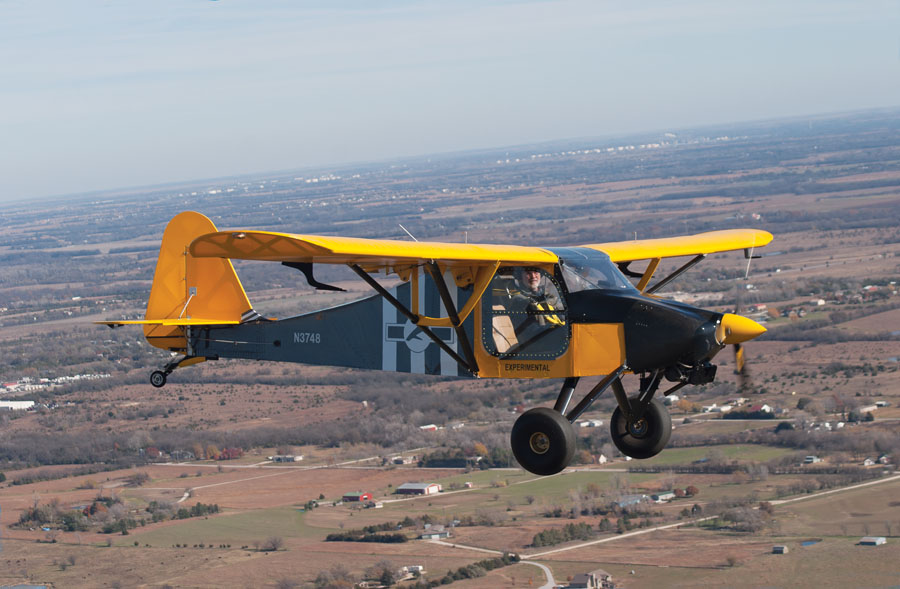
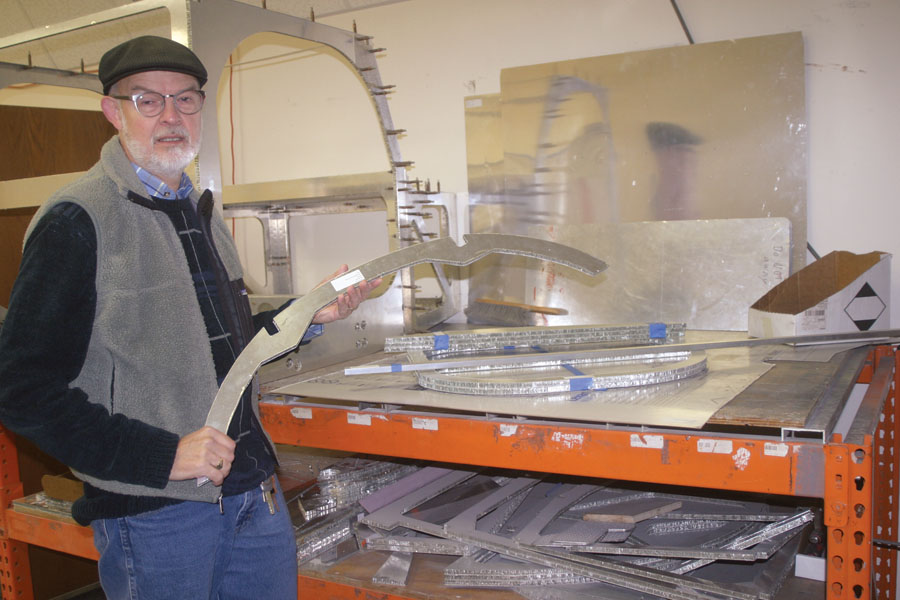
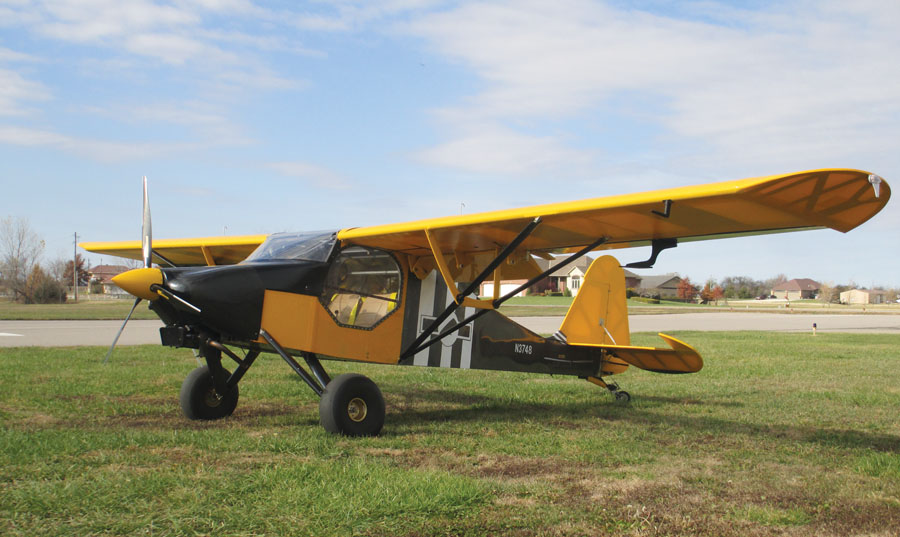
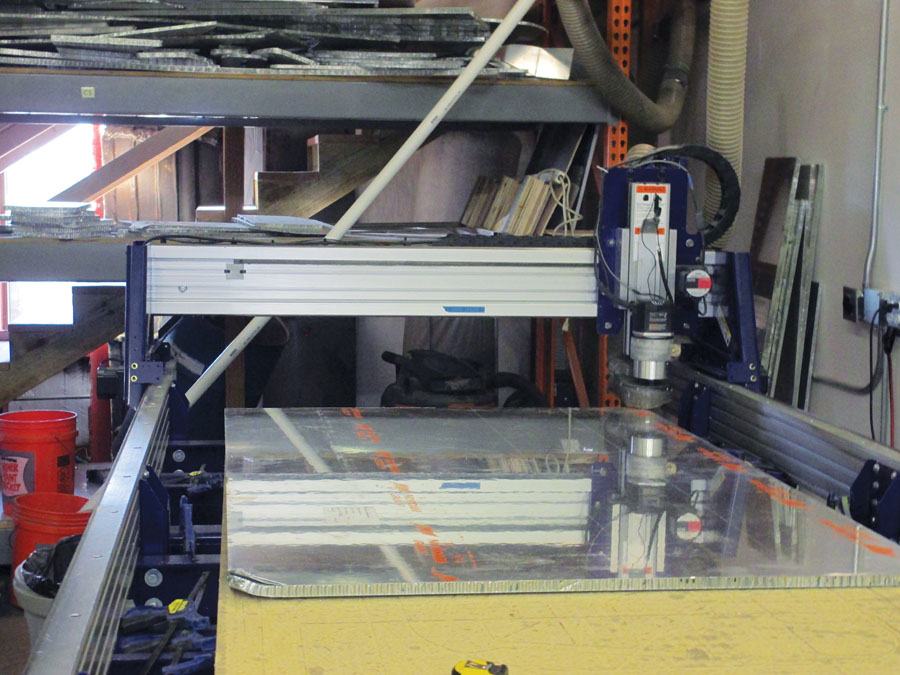
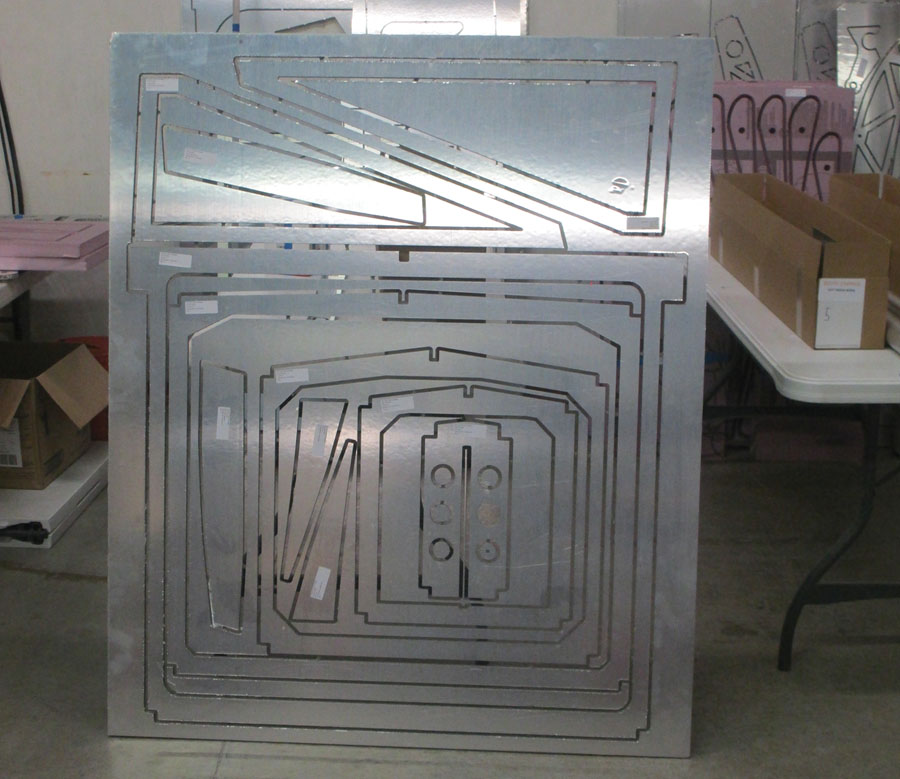
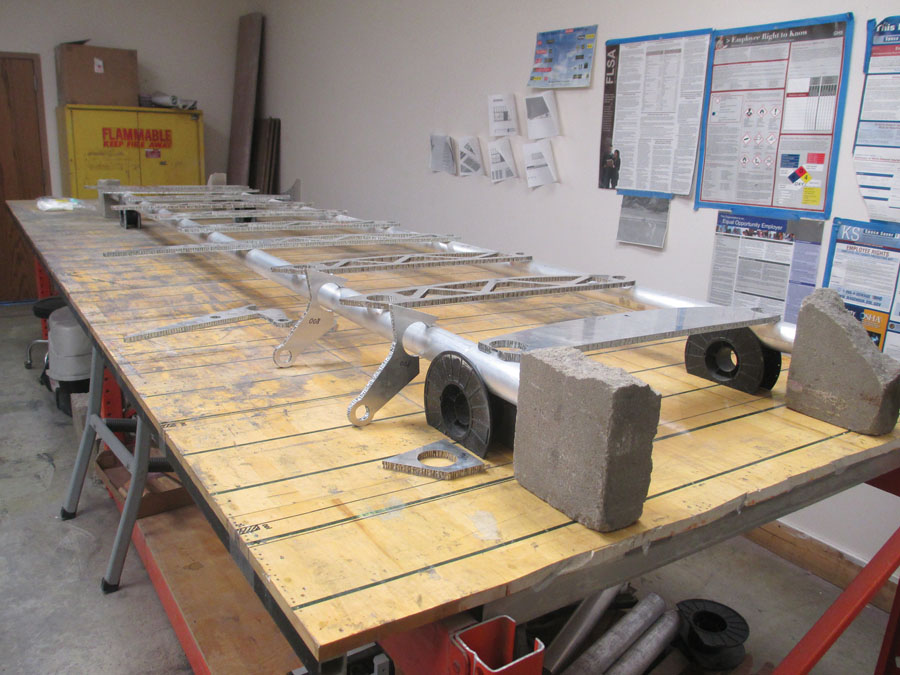

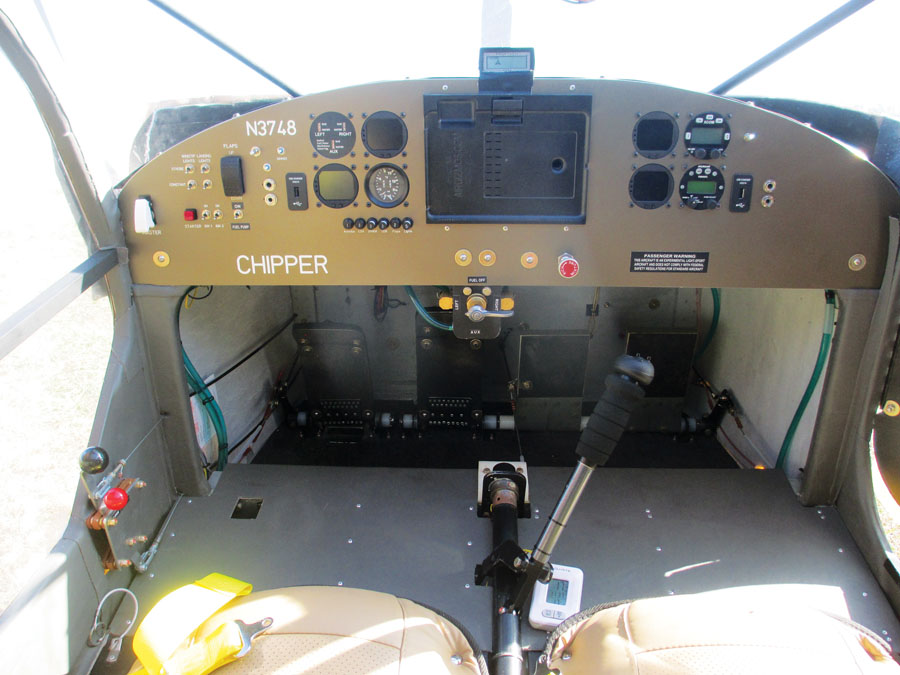
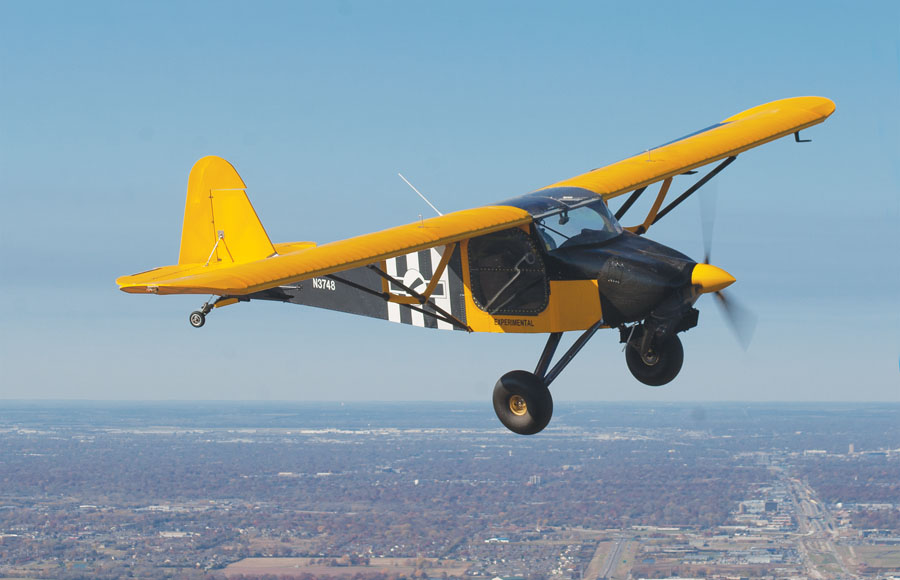
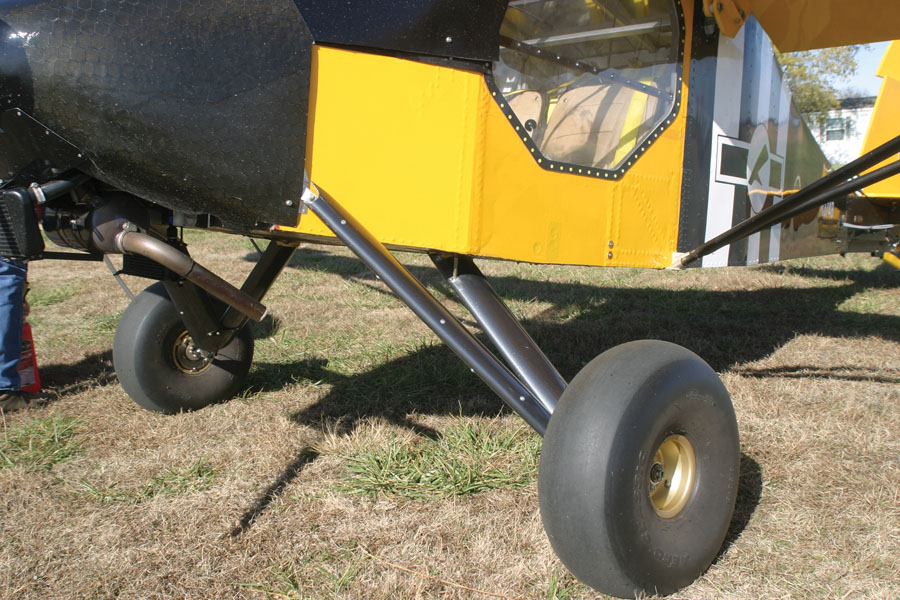

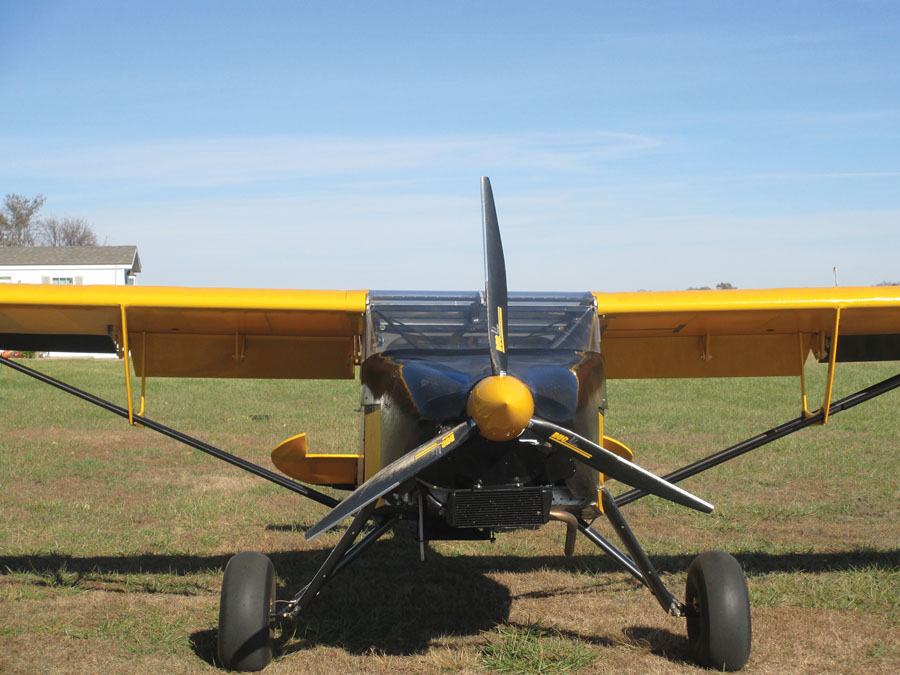
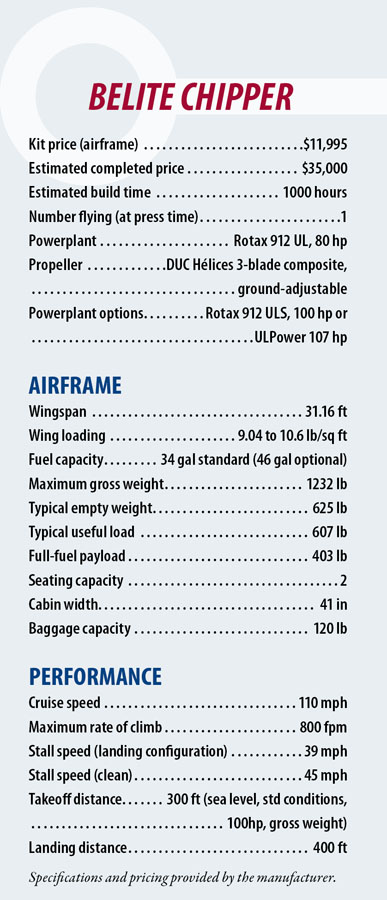
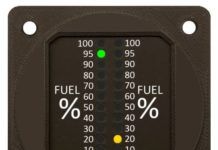
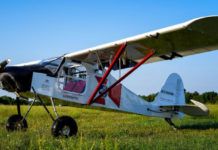
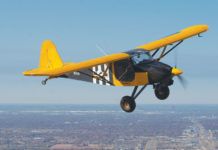
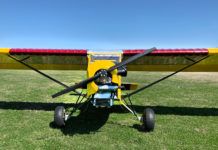
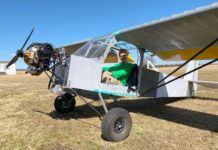
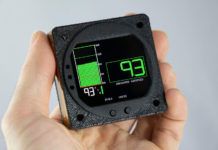
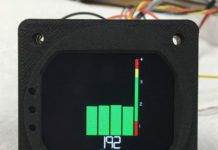
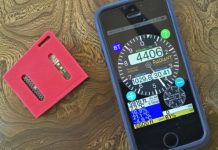
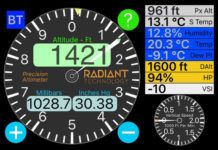
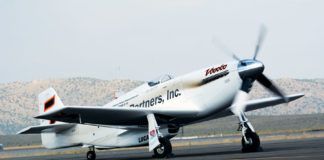
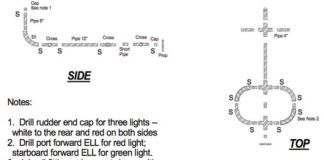
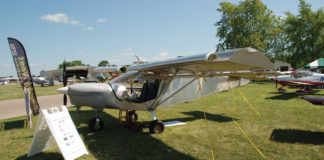

I am in love with your marvelous machine BUT do I need a permit and do you deleiver in Québec Canada near Ottawa I would love to fly with my wife. Thanks for now.Claude